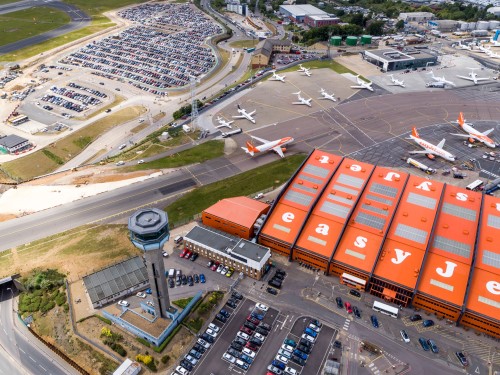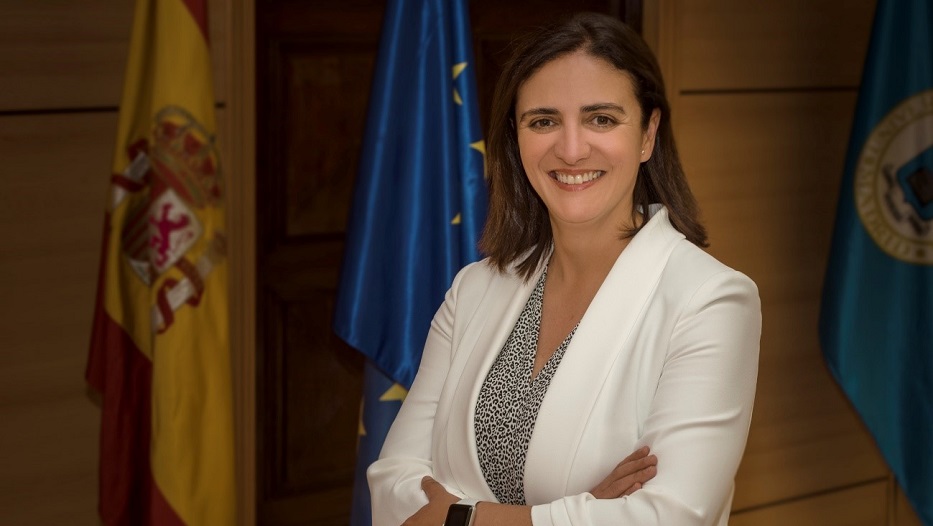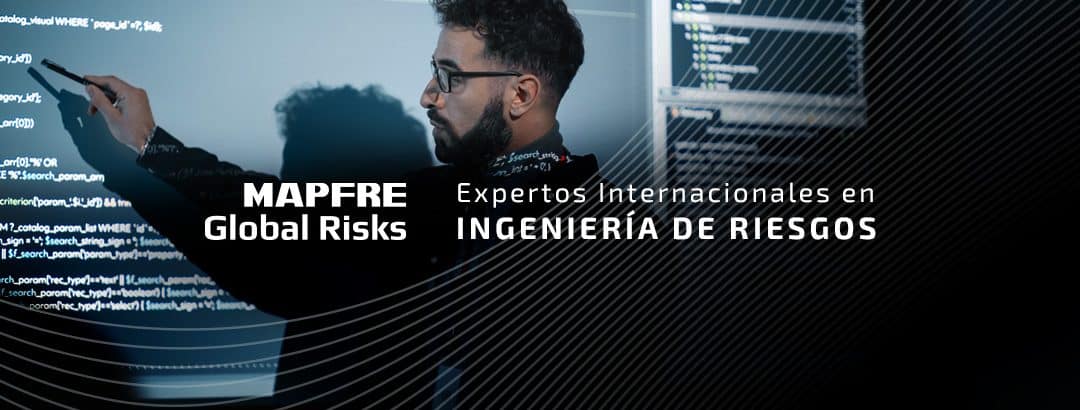admin | 22/10/2019
“It’s difficult for a company to have sustainable growth without a proper risk management policy”
More than 263 million people used the 46 Spanish airports managed by AENA to travel in 2018. The company is also in charge of two heliports and participates directly and indirectly in the management of 17 other aerodromes in different countries. As head of the Risk and Insurance Division, Esperanza Pereira tells us the value of efficient risk management in what is the world’s leading airport operator in terms of number of passengers.
1. What are your main functions as head of AENA’s Risk and Insurance Department?
My functions include the identification, analysis, and assessment of the material, economic, and personal risks of AENA’s airport network, both in Spain and abroad – with Luton Airport in London and, recently, six airports in northeast Brazil – in order to mitigate them by transferring them to the insurance market or taking them on through internal retention. Likewise, one of my responsibilities is the management of accidents occurring in Aena S.A.’s airport network in Spain, the United Kingdom, and Brazil.
2. What are the most significant risks you undertake?
The risks that affect our own assets, as well as the third-party liability risks of an airport operator. Material, economic, and personal risks of AENA’s airport network both in Spain and in the other countries in which the company operates.
“Given the nature of our activities at AENA, the entire company is keenly aware of the need to keep risks under control”
3. How does AENA work to raise corporate awareness of risk?
Given the nature of the activities we carry out at AENA, the entire company is keenly aware of the need to keep risks under control. Each of the departments, both at the airport and corporate level, participate within their scope in their prevention, reduction, and/or mitigation.
4. How is the risk manager’s work and involvement in the business perceived?
The work of AENA’s Risk and Insurance Management department is highly respected and valued both nationally and internationally. The whole company is very aware of risk policies and understands the role we play and the difficulty it entails. In our case, this management is integrated into all business processes. From our area we work jointly and collaboratively with the different departments of the company (Contracting, International, Human Resources, etc.) to identify, manage, and reduce risk.
AENA is fully confident in our team’s experience and knowledge of the company’s risks and the insurance sector. Likewise, it appreciates having a professional department that advises, helps the company’s strategy, and provides solutions to ensure business success.
5. Why is it essential for a large company to have a risk manager?
I find it really difficult for a company to have sustainable growth without a proper risk management policy. The challenge is to achieve the coordination of the different business units so that the strategy and policy against risks are developed in an integrated manner throughout the company. Developing training plans and ongoing risk analysis to keep up to date with new threats and, finally, establishing increasingly agile and effective management systems are, in my opinion, essential to achieving sustainable growth for any business organization.
Risk Management departments take on huge responsibility as they must become engines for innovation and the incorporation of solutions that go beyond mere financial transfer. On the other hand, they must continue to offer an excellent service at all levels, from postings to claims management.
“Interconnectivity requires professional and adequate risk management to make the company more solid and able to face the challenges that arise”
6. What is your relationship with agents in the insurance industry?
AENA works closely with both the insurance broker and the various insurance companies that provide solutions to our needs. As far as contracting is concerned, it is subject to the Public Sector Contracts Act and, therefore, we launch tenders when policies expire in order to guarantee that our risks are insured by the best players in the market.
7. What do risk managers demand from insurers?
For them to provide insurance solutions when needed and respond quickly in the processing and payment of claims.

AENA is one of the world’s largest airport operators, with 46 Spanish airports, two heliports, and direct and indirect participation in the management of 17 international infrastructures.
8. How does global interconnectivity affect the empowerment of the risk manager figure?
AENA is one of the largest airport operators in the world. Due to the nature of our activity, we work in a highly regulated environment and must respond to very diverse and interconnected third parties: users, airlines, providers, and all types of companies that carry out activities in airport facilities, as well as a very broad group of employees. Airport infrastructures operate as connecting ecosystems and are critical in all countries, even more so in those where tourism plays a major role in the economy. In this increasingly global context, risk management presents great opportunities, since all this interconnectivity requires professional and appropriate management to make the company more solid and capable of facing the challenges that arise.
9. What are their major future challenges?
It is a constantly evolving market that moves quickly in the face of new uncertainties. Today, risk managers must prepare for issues related to the sustainable economy, for example, and how we as companies can help combat global warming.
Esperanza Pereira Fernández has a degree in Law from the Universidad Francisco de Vitoria. She has developed her professional career in important companies such as Clifford Chance, Hiscox, Repsol, and AENA.
She is currently the head of AENA’s Risk and Insurance Department and Second Vice President of the Spanish Association of Risk and Insurance Management (Agers).
8. ¿Cómo incide la interconectividad global en la potenciación de la figura del gerente de riesgos?
AENA es uno de los mayores gestores aeroportuarios del mundo. Por la naturaleza de nuestra actividad, trabajamos en un entorno altamente regulado y debemos responder ante terceros muy diversos e interconectados: usuarios, líneas aéreas, proveedores y todo tipo de empresas que realizan actividades en las instalaciones aeroportuarias, así como a un colectivo de empleados muy amplio. Las infraestructuras aeroportuarias operan como ecosistemas en conexión y son críticas en cualquiera de los países, más aún en aquellos en los que el turismo tiene un gran peso en la economía. En este contexto cada vez más global, a la gestión de riesgos se le presentan grandes oportunidades, ya que toda esta interconectividad requiere una gestión profesional y adecuada para hacer a la empresa más sólida y capaz de afrontar los desafíos que se presentan.
9. What are their major future challenges?
It is a constantly evolving market that moves quickly in the face of new uncertainties. Today, risk managers must prepare for issues related to the sustainable economy, for example, and how we as companies can help combat global warming.

Esperanza Pereira Fernández has a degree in Law from the Universidad Francisco de Vitoria. She has developed her professional career in important companies such as Clifford Chance, Hiscox, Repsol, and AENA.
She is currently the head of AENA’s Risk and Insurance Department and Second Vice President of the Spanish Association of Risk and Insurance Management (Agers).





